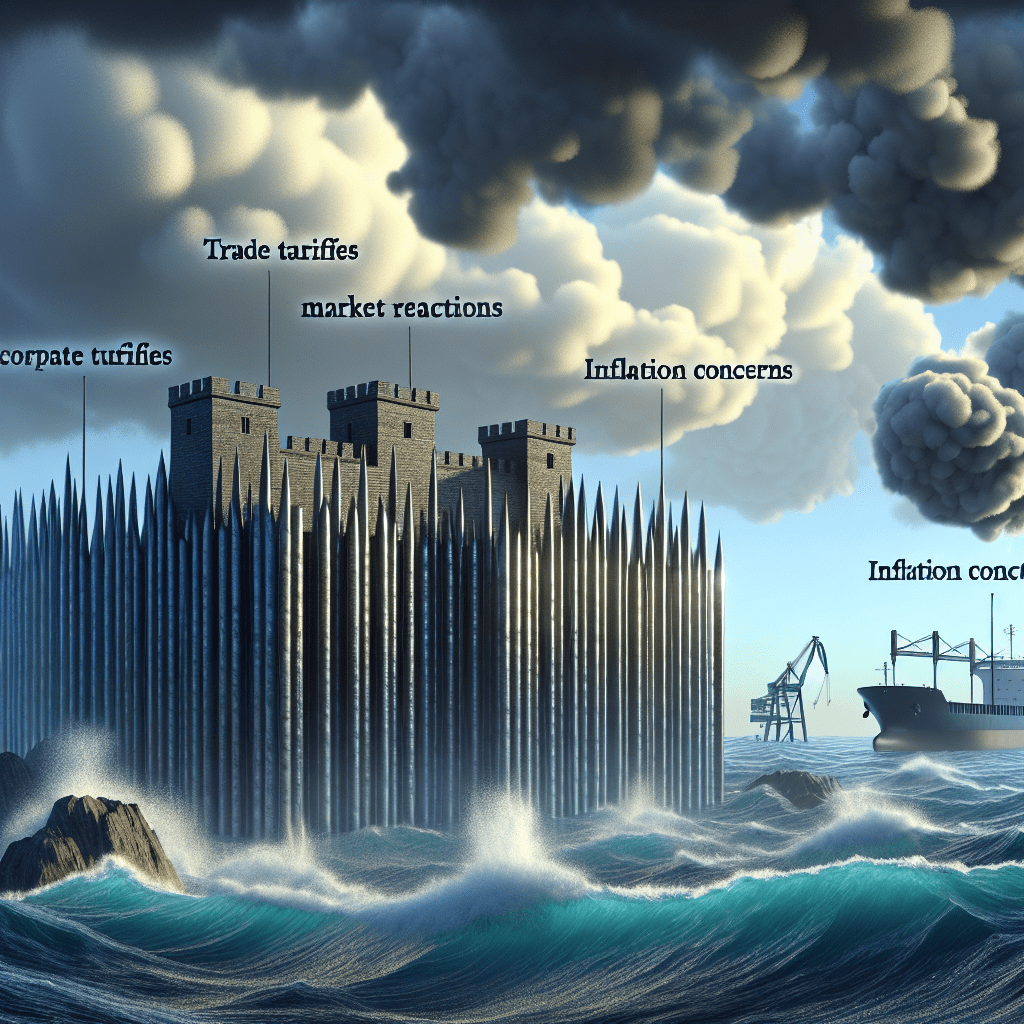Trump’s Trade Tariffs: Market Reaction and Economic Implications
In the wake of significant trade proposals from the Trump administration, financial markets are responding to an array of potential tariffs that could reshape trade dynamics. President Donald Trump has signaled intentions to impose 25% tariffs on steel and aluminum, as well as implement reciprocal tariffs aimed at matching import duties from other countries. As these developments unfold, investors are starting to adapt, albeit with some skepticism around the actual execution of these proposed tariffs.
Market Stability Despite Uncertainty
Since Trump took office just three weeks ago, his trade-focused policies have dominated market discourse. However, contrary to what might be expected during times of uncertainty, the three major U.S. stock indexes—Dow Jones Industrial Average (DJIA), S&P 500 (SPX), and Nasdaq Composite (COMP)—all performed positively on recent trading days. On one particular Monday, they finished higher even as Treasury yields showed minimal movement from previous levels.
Notably, the ICE U.S. Dollar Index rose nearly 0.3% to stand at 108.32, reflecting some investor confidence. However, gold prices surged to a record high of $2,914.30 per ounce, driven by apprehension over Trump’s protectionist measures. Such contradictory responses underscore a complex sentiment within the markets; while some investors are buoyed by potential corporate benefits from reduced regulation and tax cuts, others are cautious about the implications of tariffs.
The Impact of Tariffs on Inflation and Growth
Market analysts underscore a growing concern around the inflationary impact of Trump’s proposed tariffs. For instance, a team from the bond giant Pimco has forecasted that the tariffs on Canada, Mexico, and China alone could increase U.S. inflation by 0.8 percentage points and reduce economic growth by 1.2 points within the first year. These estimates highlight the potential economic ramifications of Trump’s trade agenda, suggesting that while tariffs may protect certain sectors, they could also lead to broader economic challenges.
Eric Sterner, chief investment officer at Apollon Wealth Management, pointed out the difficulty in predicting the consequences of such sweeping trade policies, stating, “Market participants definitely care about tariffs, but it is so hard to figure out what will result in policy changes.”
Investor Sentiment: Tariff Fatigue and Strong Earnings
Interestingly, there appears to be a sense of “tariff fatigue” amongst investors. Marc Chandler, chief market strategist at Bannockburn Global Forex in New York, noted that there was a significant market reaction to the announcement of reciprocal tariffs initially, with the Dow dropping 444.23 points (approximately 1%) following the news. However, responses to subsequent tariff talks have been more muted, suggesting that investors are increasingly desensitized to trade rhetoric.
This sentiment is further complicated by recent polling indicating that, while Trump’s overall approval rating stands at 53%, many Americans disapprove of proposed tariffs on key trading partners like Mexico and Canada. Such public opinion can grant Trump some leeway with his trade tactics, even as confusion lingers about which tariffs will be enforced.
Bright Spots Among Corporate Earnings
Among the turmoil of trade proposals, positive corporate earnings reports are offering some reprieve to investors. A significant portion of the companies that have reported earnings this season—77%—have exceeded their estimates, marking a healthy performance above the 10-year average. Fourth-quarter earnings are positioned to showcase the highest year-over-year growth rate since the fourth quarter of 2021, highlighting strong business fundamentals amidst the uncertainty of trade policy.
Sameer Samana, from Wells Fargo Investment Institute, suggests that tariffs are just one element in a range of policies aimed at promoting a pro-business environment. This could explain why markets have remained relatively stable despite mounting tariff threats.
Conclusion: Navigating Uncertain Waters
President Trump’s trade proposals are stirring a mix of apprehension and opportunity in the financial markets. While a degree of “tariff fatigue” may be setting in, the potential inflationary impact of these tariffs poses a legitimate threat to economic growth. Yet, strong corporate earnings suggest that businesses may weather the storm more effectively than anticipated.
As markets continue to digestion these developments, the coming weeks will be critical in shaping investor sentiment and defining the actual landscape of U.S. trade policy. Investors are advised to remain vigilant as this evolving situation unfolds amid fluctuating market dynamics.
